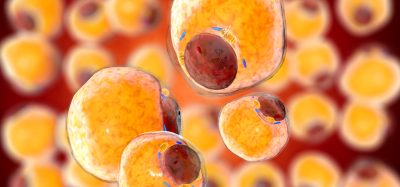What is the key source of T cell exhaustion?
Posted: 22 March 2023 | Izzy Wood (Drug Target Review) | No comments yet
US discovery opens the way to drugs that can prevent T cell therapies from losing their potency over time.


Scientists at Dana-Farber Cancer Institute and New York University (NYU) Grossman School of Medicine, US, have shown the commanding role of a specialised group of proteins in the nuclei of our cells, called mSWI/SNF (or BAF) complexes, both in activating T cells to attack cancer and triggering exhaustion.
CAR T-cell therapies have opened a new era in the treatment of human cancers, particularly, in hematologic malignancies. However, they often display a frustrating trait inherited from the body’s own immune system cells: “exhaustion”. Exhaustion is not only seen in cancer-fighting T cells but is also frequent in the setting of viral infections.
Reported in Molecular Cell, the findings suggest that targeting these complexes, either by gene-cutting technologies such as CRISPR or with targeted drugs, could reduce exhaustion and give CAR T cells the power to take on cancer.
“The problem is that most engineered T cells, like CAR T cells, tucker out,” said Dr Cigall Kadoch of Dana-Farber and the Broad Institute of MIT and Harvard. “They get activated when they encounter an infected or diseased cell, but they quickly stop proliferating and fail to go on the attack. We and other groups have wanted to understand why: what are the determinants of T cell exhaustion?”.
Research over the years has suggested that exhaustion is not controlled by a single gene or a few genes but by the coordination of many genes that together generate an exhaustion “programme” for the cell.
The researchers began focusing on mSWI/SNF complexes years ago as potential regulators of these programmes. These complexes qualify as the kind of master switch that could potentially control the exhaustion programme. The team decided to track their patterns over the entire course of T cell activation and exhaustion: to determine where they are situated on the genome of battle-ready T cells and how those positions change as exhaustion sets in.
“We did the most comprehensive profiling ever of the occupancy of these complexes in T cells across time, in both mouse and human contexts,” Kadoch explained. “We found that they move around in a state-specific manner, which raises the question of why they move; how do they know where to go in each state?”
The biggest influences on their location were certain transcription factors. The factors guided mSWI/SNF complexes and steer them to precise sites on the genome.
“At each stage of T cell activation and exhaustion, a different constellation of transcription factors appears to guide these complexes to specific locations on the DNA”.
As this profiling work was under way, a team at NYU Grossman School of Medicine were systematically shutting down genes in T cells to see which ones, when silenced, slowed or stopped the process of exhaustion.
“Our labs then together performed a detailed series of joint experiments that showed that if you stifle the genes encoding various components of these complexes, the T cells not only don’t get exhausted, but they proliferate even more than before.” co-senior author Iannis Aifantis explained. “We essentially reversed the exhaustion program with these inhibitors,” said, “and resulting cells resembled more memory-like and activated T cell features”.
The findings are especially timely given that the first compounds that specifically inhibit the catalytic activity of mSWI/SNF complexes are now being tested in phase 1 clinical trials for cancer.
“Our labs are excited by these findings on numerous fronts- from identifying another important example of the wide repertoire of mSWI/SNF functions in human biology, to the opportunity to target these functions to improve immunotherapeutic approaches for the treatment of cancer and other conditions” concluded Kadoch.
Related topics
Chimeric Antigen Receptors (CARs), CRISPR, T cells, Targets, Therapeutics
Related conditions
Cancer
Related organisations
Dana-Farber Cancer Institute, New York University (NYU) Grossman School of Medicine
Related people
Dr Cigall Kadoch, Iannis Aifantis








